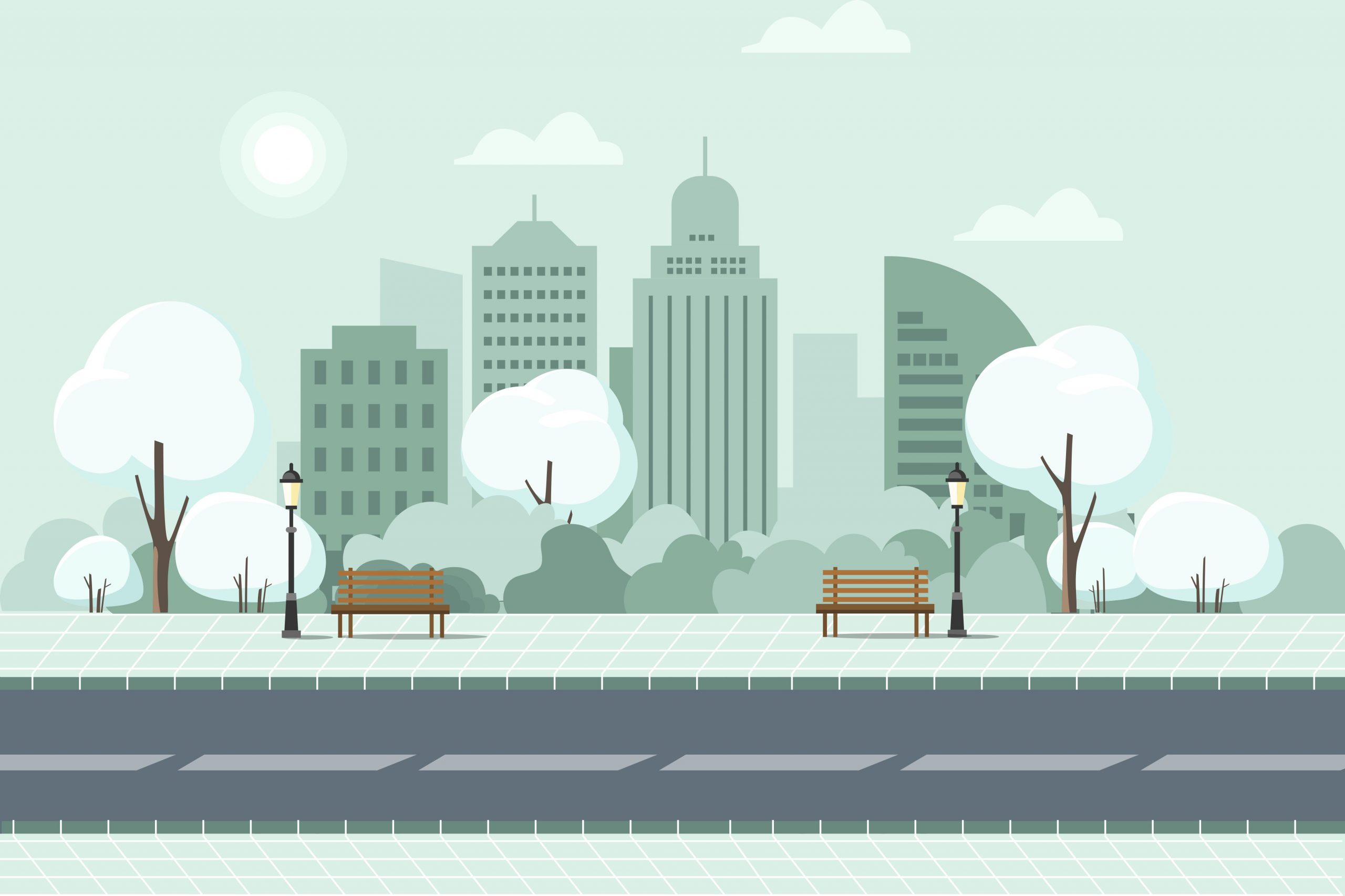n 2015, President Abdel Fattah el-Sisi shocked the world during the Egypt Economic Development Conference by announcing the country would have a new capital with gardens the size of New York’s Central Park, the country’s first monorail and an international airport larger than London’s Heathrow. It would be home to 6.5 million people and have a “green river” bisect it, similar to the Nile in Cairo.
The New Administrative Capital marks Egypt’s first attempt at building a “smart” city. “We are trying to solve all the problems we had in the past in the new capital,” Khaled el-Husseiny, spokesman for the project, told Reuters. After numerous delays, the government announced in March that civil servants would start moving there by the end of this year.
However, creating a smart city that attracts millions of families goes beyond digital infrastructure and services. “One of the most defining features of a smart city is its capacity to assimilate new technologies,” Jaime Ramos, lead landscape architect at U.S.-based HR Green, said to Tomorrow.City, a think tank. “It is not a list of devices that make urban life easier.”
Today’s cities
Generations of families live and work in old cities such as Cairo, Alexandria and Assiut. Residents can easily walk to hangout venues, shops and grocery stores. Each neighborhood has a distinctive character and energy. For example, Garden City, despite its proximity to bustling Downtown, is a sleepy neighborhood. On the downside, these original urban areas have almost no green spaces, and parking is a nightmare while streets are gridlocked most of the time.
Cities developed since the 1970s, such as Sheikh Zayed, New Cairo and 6 of October, resolved many problems that plague historic towns. They have less traffic gridlock and more greenery, particularly in gated complexes.
That mirrors global trends. “Much of the development has been pushing out toward the suburbs,” noted Joseph Pobiner, principal for planning and urban design at Perkins Eastman, in a February 2020 blog on Building Design + Construction magazine’s portal.
However, new cities created new problems. “In doing that, we also separated our land uses so much that walkability was all but forgotten,” wrote Pobiner. “The result? The only way to get around was to drive.”
Currently, neither historic nor newer cities are sustainable. “Stressed urban areas are thriving, offering opportunities, but increasingly becoming unaffordable for a large segment of citizens,” wrote Marco Dall’Orso, COO at Arexpo, an Italian urban developer, in a World Bank blog. “They are not inclusive [and are] polluted, with overburdened infrastructure.”
Urbanization boom
According to the World Bank, about half the global population lives in cities, with the urban population expected to swell from 1.5 billion to 6 billion by 2045. “This simple statistic puts at risk the vital signs of any urban space in very basic terms of [safety], supply and sustainability,” said Ramos in July. He estimates that by 2050, 75% of the world’s people will live in urban areas.
Population growth, socioeconomic trends, geopolitical events and the desire for a better life are “driving urbanization across the world and particularly in developing countries and emerging economies,” said Dall’Orso.
Many countries embrace “easy” solutions, including “regeneration of underutilized areas, urban expansion or creation of new developments and cities,” noted Dall’Orso in the blog, which estimates urban expansion could outpace population growth by 50% in the coming three years. “City leaders must move quickly to plan for growth and provide basic services, infrastructure and affordable housing to meet the needs of expanding populations.”
Martin Weiss, a professor at the University of Pittsburgh, said fourth-generation cities should be more attractive than ever, with the pandemic forcing many to stay at home and rely on tech. “Digital technology facilitates remote work, private and public online service delivery, and contactless interactions,” Weiss told the World Bank.
Egypt’s new cities
As part of government plans to double the country’s livable area by 2030, the state will build 14 “smart fourth-generation” cities. The aim is to relocate 30 million people to those metropolises.
The cities are part of Egypt Vision 2030’s 10th pillar to create “balanced spatial development management of land and resources to accommodate population and improve the quality of their lives,” according to the official document. That would reduce the housing gap from 12% in 2015 to under 5% in 2030, and per capita, green space would triple to 3 square meters by 2030.
The flagship project is the New Administrative Capital, which the government estimates will create 1.85 million jobs. It will include 34 buildings for ministries and be home to the stock market, embassies, and private and public financial institutions. Standout features will consist of a citywide security system that U.S. Honeywell deployed using Internet of Things technology to aid police and medics. Its digital infrastructure will be fiber optic, according to the city’s website, with some electricity coming from a 90-square-kilometer solar farm. Other greenfield cities include New Alamein and Galala.
Meanwhile, the state is building new cities as suburbs to historic metropolises. They include New Ismailia, New Rashid, New Rafah in North Sinai and New Mansoura. The government also plans to extend existing Cairo suburbs such as New Obour, New October, October Gardens, New Sheikh Zayed, and New Toushka, which flanks Toushka Valley near the Sudanese border.
In June, the New Urban Communities Authority announced it would cooperate with Talaat Moustafa Group to build Noor City on 5,000 feddans on the outskirts of the New Administrative Capital. According to a press announcement, the city will have a net-zero carbon footprint, “smart” infrastructure, and house 600,000 people.
Part of an extensive project called Capital Gardens, Noor City is the only new “smart” city developed by the private sector. “The city will have an optic fiber infrastructure, and WiFi networks will blanket the metropolis,” said Talaat Moustafa, chairman of Talaat Moustafa Group.
The government’s overarching plan is to have nine cities in the Globalization and World Cities Index, which measures how connected the city is to the global economy in the coming decade, compared to just Cairo in the current rankings, according to unnamed government sources speaking to Youm7.
Design for citizens
Smart cities, however, are not just about statistics and a conventional approach to master planning. “They involve fundamental shifts based on strategic or philosophical principles of ‘how’ and ‘why’ we develop,” wrote Pobinar of Perkins Eastman.
He explained that any new metropolis needs districts where “accidental collisions” between people generate new ideas. “That is the core principle behind an urban regeneration strategy called ‘innovation districts’ — massive mixed-use developments with a variety of housing types to encourage a diverse population mix, combined with walkable mixed-use employment and retail areas,” he said. “Think of it as a massive regional shopping mall, but for ideas and creativity … It is basically how we built our cities prior to … suburban expansion.”
A university, hospital, or research center would “anchor” other developments in that district. Meanwhile, a “variety of transport options [would] often favor mass transit over cars,” said Pobinar. Early attempts include Spain’s 22@Bacelona and Boston’s Seaport innovation district built in 2000.
This pedestrian-friendly concept requires unique features such as underground freight tunnels, utilities, gas lines and a pneumatic waste-handling system. That would create space for a “friendlier public realm while ensuring that infrastructure maintenance and upgrades can take place without disrupting the street,” said Pobinar. “The design also puts people at the heart of sustainable mobility options. At Quayside [in Toronto, Canada] every building will have access to a bike share with [an] e-bike and an e-scooter docks within a five-minute walk.”
Another aspect of urban trends is healthy living, according to Dan Buettner, a National Geographic Fellow and author. In a 2005 National Geographic cover story, he explained the concept that every new city must have a “Blue Zone” to promote healthy eating and exercise. Its design principles are similar to those of innovation districts, with walkability, having farm-to-table restaurants, and community events topping the priority list. “Blue Zone principles represent good planning and can be incorporated into urban designs with little effort, especially in new greenfield developments,” wrote Buettner.
With the impending climate crisis, all new cities need eco-districts to be a priority for urban development. [They] fuse sustainable development principles with urban planning to reduce the ecological footprint of a development,” wrote Pobinar.
Aside from the technological aspect of building a low-emissions city, ecodistricts promote walking, bicycling and public transport on zero-emission vehicles. Additionally, workspaces would be no more than 9 meters away from operable windows to ensure all employees enjoy the sunshine. On the outside, the building should capture rainwater for further processing and use only renewable power.
Pobinar stresses those three concepts are not mutually exclusive and that incorporating them would create the “ideal” new city. “Think of it [as] three overlapping circles moving closer and closer toward each other,” he explained.
Building fourth-generation cities shouldn’t be a trial-and-error exercise. Ramos stressed the importance of using the “digital twin,” a system where smart city designers test their innovations on a small scale and study the results before expanding their ideas to an entire metropolis. “Digital twins make it possible to engage in small and large-scale urban interventions,” he wrote on the Tomorrow.City portal. That enables decision-makers to understand their effects before construction starts.
Digital for all
A vital part of those new urbanization trends is that they need to have a robust digital infrastructure. That could make them islands onto themselves, separate from existing cities in the country. According to Nathan Sykes, founder of Finding an Outlet, a tech news portal, urban areas with poor internet connections add another dimension. Those living in such areas would have to relocate or find themselves left out of the national digital system. “In the post-pandemic era, we must prioritize measures to address inequality and digital divides, which leave many of the poor, and poor cities, behind,” Gunes Baset, a communication consultant at Urbanscapes Group, wrote in the World Economic Forum in August.
The government has been working hard to bridge the digital divide. As of August, the state announced several significant projects, including linking all government-agency databases into a single repository. The second is improving internet speeds by deploying optic fiber networks extending to personal computers at government buildings and in new cities. The third dimension is digitizing government services, such as the national post office, and allowing each agency and ministry to have a portal to deliver its services.
Egypt ranked as having the 93rd-fastest internet in the world in July, up four positions from a year earlier, according to Speedtest, an online tool that measures internet speeds. However, the country still has a long way to go, as the global average internet speed is 2.2 times faster. Meanwhile, in the latest Network Readiness report published in 2020, Egypt ranked 84th.
In it, the best-performing sub-pillars were government and the economy (each 60th), while the worst were inclusion (102nd) and quality of life and content (each ranked 96th).
There is added pressure on the government, given that state-of-the-art digital infrastructure will likely be obsolete in a few years. Accordingly, digital infrastructure developments must include a degree of flexibility to ensure easy upgrades. “A well-[connected] smart city can generate gigabytes of data each day … While 5G is the current standard, cities should start looking beyond and start preparations for 6G, which should arrive by 2030,” Ramos said in July.
Digital risks
Transparency and openness between the government and its stakeholders will be vital as cities increasingly rely on tracking personal data to offer personalized experiences. “Cities become smarter when citizens and communities use technology to coproduce an environment where their digital rights are protected, and their cities are made more sustainable,” Rudi Borrman of the Open Government Partnership program, said in a World Bank post in July.
With smart cities connecting people, places and services in new and innovative ways, the government needs to make sure there is a solid legal framework protecting the residents’ data of those next-generation cities.
“The obvious change is that [new] cities and the smart technologies [they use] will make our lives a whole lot easier,” wrote Sykes in 2018 to Best Techie. Accordingly, data gathering and processing by all devices interacting with individuals will become the building blocks of the new metropolis. “Anything and everything will soon become powered almost entirely by data,” said Sykes.
Such data will allow internet-enabled home appliances using artificial intelligence to automatically make morning coffee and warn homeowners when supplies are low in the fridge. GPS on vehicles can interact with other cars on the road, traffic lights and warning signs to prevent accidents, while a surveillance system registers violations and congestion to redirect traffic. “Data will impact the way we engage with the world … by altering how we shop, live and … travel,” said Sykes. “It can determine the ideal travel route … and provide more personalized product recommendations.”
Egyptians are, to an extent, living in such a world with smartphones, social media and websites personalizing ads on their platforms based on an individual’s location and online activity. “The idea of pervasive technology that tracks and monitors your every move [is] no longer … just a concept,” according to Sykes. In smart cities, the government and businesses will have real-time access to even more of citizens’ previously private data.
That has raised alarms for many experts. “Because of this connection with technology, we’ve had concerns about how smart cities will address issues such as data privacy and social exclusion,” said the World Bank report.
Egypt passed its first data protection law in July 2020 based on the EU General Data Protection Regulations (GDPR). For example, it stipulates that all companies dealing with client data must have a data protection officer to ensure compliance. In addition, clients will have to sign more consent forms, and there will be limits on how such data is used and stored. That would apply to both local and multinational companies operating in the country.
A newly created Personal Data Protection Center will regulate data usage, penalize violators and issue licenses for companies to collect and process data, among other functions. “The new law marks a significant step toward strengthening Egyptian residents’ rights of privacy and creating a transparent and solid legal foundation to support the growth of the … technology sector,” Ghada El Ehwany of Baker McKenzie law firm in the U.A.E., wrote in a November blog on Global Compliance News.
The challenges might appear during implementation, hindering local and multinational companies operating in Egypt. Additionally, it could mean additional paperwork burdens. “While the grace period [until mid-March 2022] appears generous, we are aware from our experience with preparing companies for enforcement of GDPR that the work required can be time-consuming,” noted El Ehwany. “For multinational organizations that already abide by the GDPR or similar privacy frameworks, the Law doesn’t present many new concepts. However, the ease with which those companies can secure the required licenses or permits will be fundamental.”
Meeting expectations
Another hurdle facing new cities is to be suitable for all citizens, a central component in any new metropolis. “Inclusion is a paradigm for smart cities,” said Ramos. “They cannot allow themselves the luxury of ignoring it.”
Dall’Orso of Arexpo stressed the importance of “not trying to imitate other cities. “They should learn from other cities’ experiences but should find their own way to uniqueness … and success,” he said. “Cities should be genuine, authentic, not replicas of other cities. Authenticity emerges from … dynamic entities that evolve over time driven by intrinsic and extrinsic factors.”
Private sector developers also have a significant role in creating livable cities, not just a superlative metropolis by the numbers. Alice Charles, head of cities and real estate at the World Economic Forum, told the World Bank the role of the private sector in smart cities is to move from “selling widgets and gadgets” to “promoting an outcome-driven model.”
In general, new cities under construction still require a lot of work to make them livable. “It is clear that in the new urban era opening up before us, the most human side of technology is yet to be explored,” said Ramos in July.
Dall’Orso believes the way to create an ideal city is to set up a “high-performing, multidisciplinary team … between local government, community-based organizations and the private sector” to ensure a “virtuous trajectory toward the ‘ideal city’ as a continuous sequence of affordable, successful, strategic moves, consistently aligned … to meet stakeholder needs and expectations.”






